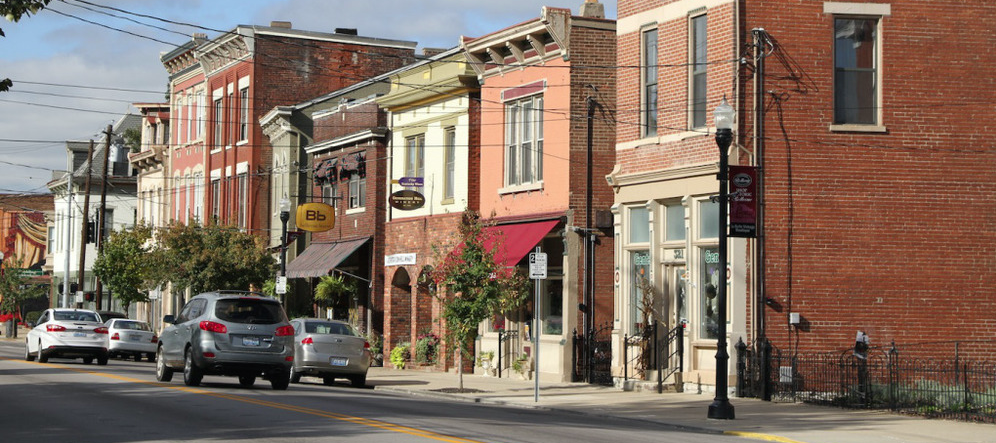3.5M
Downloads
684
Episodes
The Strong Towns Podcast is a weekly conversation on the Strong Towns movement, hosted by Strong Towns Founder and President Charles Marohn and frequently featuring special guests. The podcast explores how we can financially strengthen our cities, towns, and neighborhoods and, in the process, make them better places to live. Join Chuck in examining how everything from urban design to economics to systems theory to psychology helps inform this core question.
Episodes

Monday May 06, 2019
Land Value Tax with Joe Minicozzi
Monday May 06, 2019
Monday May 06, 2019
As an engineer, I worked for cities doing public improvement projects; building and maintaining streets, sewer pipes, water mains, and drainage systems. One project opened my eyes to a crazy world of perverse incentives I didn’t know existed.
It was a rehabilitation project in a struggling neighborhood, the kind of place filled with rental properties badly in need of some attention. The project I was working on would not only replace the underground utilities; it would fix the potholed street and broken sidewalks, restoring the streetscape to something seen only in the more affluent parts of town.
This work was being paid for mostly by a grant with some city funds thrown in, so the property owners weren’t expected to pay anything directly. I went to the public hearing to present the plans, expecting to be embraced as a hero. That is not what happened.
First, the “public” at this hearing was not the people I was expecting: the people who lived in the neighborhood. The neighborhood’s residents were almost all renters and, since the official public notice was mailed to the property owners, the renters didn’t even know.
The owners of the properties did know, and they were the ones out in force. They were mad. With each slide in my presentation, the tension in the room only grew. My cheerfulness about what we were doing for them only made them more irritated. Finally, courtesy drained from the room.
“We don’t want this.”
The ice was broken and now they all started to speak in succession. Whose idea was this? Why was this necessary? Did we have to do this project? The tone was accusatory where it wasn’t defensive.
It took some time for me to understand their central concern: they were worried this project would raise their taxes. In the narrow margins of the low-end rental business, they were worried that improving the street would improve their property values, and improved property values would mean increased taxes. They preferred the run-down street and the cracked sidewalks.
How Taxes Shape Human Behavior
My friend Joe Minicozzi, the founding principal of the consulting firm Urban3, is one of the most brilliant people I know when it comes to analyzing the consequences of tax policy for our cities. He frequently observes in his talks that what we tax—and what we don’t tax—has consequences. To recognize this, he says, we need only look at the way taxes on cigarettes are used to discourage smoking. They are tremendously effective at doing so. If you want less of something, tax it.
So what message do cities send when they institute property taxes? By taxing the value of the buildings on a piece of land—the “improvements”—and not just the land itself, we indicate that we don’t want people to improve their land. We’re going to punish them with higher taxes for doing so.
The property owners in that struggling neighborhood I described weren’t short-sighted or irrational. They had a working business model: buy property in a poor neighborhood, do minimal maintenance, charge whatever rent they could get, and enjoy the benefits of low taxes. The project I was proposing—by improving the value of the properties in that neighborhood—was a threat to their business model.
A Better Alternative: The Land Value Tax
It doesn’t have to be this way. A few weeks ago, we at Strong Towns published an in-depth series about an alternative to taxing—and thus discouraging—property improvements. That alternative is a land value tax.
Under a land tax, you are taxed only on the value of the location you own. You thus have an incentive to improve that property and get the most out of your real estate. And your incentives are aligned with those of the community as a whole, which needs to get a return on its investment in the public infrastructure—streets, sidewalks, pipes, and so on—that serves your land and makes it developable.
I invited Joe Minicozzi to record a podcast with me on land value taxation and related issues. The genius of Joe and Urban3 is to look at tax revenue geospatially: they are able to map out a city’s expenses and sources of revenue and tell them, “Here’s where your money is coming from. Here’s where you’re bleeding it.” We can then have a conversation with eyes open about how to bring private incentives more into line with what we say we, as a community, want to accomplish—strong, financially solvent cities and neighborhoods.
Have a listen to our latest episode of the Strong Towns podcast to hear more from Joe, including:
-
How cities can recoup their investment in public amenities like access to lakes for recreation
-
How big-box chains operate like urban slumlords when it comes to property tax
-
What Pittsburgh did better than other Rust Belt cities during the late-20th century wave of deindustrialization
-
How we reconcile the moral questions around taxation—who pays their fair share?—with the cold hard math of local government solvency

No comments yet. Be the first to say something!